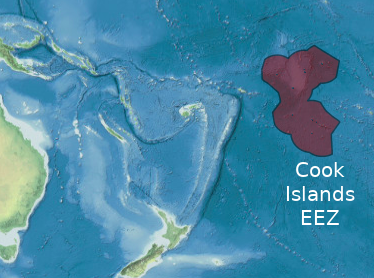Deep Sea Mining: Modeling, Observing and Quantifying Risks
|
P.F.J. Lermusiaux, P.J. Haley, C. Mirabito, C.S. Kulkarni MIT MSEAS |
T. Peacock, C.M. Royo, R. Ouillon MIT ENDLab |
Project Summary Ongoing MIT-MSEAS Research Project Supported publications Additional Project Links Background Information |

|
|
Center for Ocean Engineering
Mechanical Engineering Cambridge, Massachusetts
|
|||
This research is sponsored by the Schmidt Family Foundation.
Project Summary
Our research aims to address the outstanding questions surrounding deep-sea mining sediment plumes as this underpins all understanding and prediction of the biological response to deep-sea mining activities, and furthermore provides the foundation for the design of marine protected areas and other regulations. Limited resources have been available to understand this issue, which policymakers have identified as being of urgent need. Over the past fifteen years, only two sets of model results have been obtained (one from a European researcher and another from a European contractor) and they differ significantly in their predictions.
We plan to develop state-of-the-art numerical models of sediment plume transport that can be applied to regions such as the Clarion-Clipperton Fracture Zone (CCFZ), the mineral-rich and biodiverse region between Hawaii and Mexico in the Pacific Ocean where the majority of mining claims have been made, and/or the Exclusive Economic Zone (EEZ) of the Cook Islands, as they are currently the most active small island nation considering the possibility of deep-sea mining.
Background information is available below.
| Top of page |
Ongoing MIT-MSEAS Research
Long-Term (Collaborative) MIT-MSEAS Goal:
Our goal is to address the outstanding questions surrounding deep-sea mining sediment plumes, and to help developing island nations who are weighing important decisions about deep-sea mining within their Exclusive Economic Zones (EEZs).
Specific Objectives:
- Develop increasingly sophisticated, comprehensive and reliable modeling tools for deep-sea mining sediment plumes
- Establish laboratory testing facilities for the determination of the settling properties of deep-sea sediment
- Integrate this research with field experiments that can both test predictions and obtain valuable data to improve the models during the next few critical years
Publications
Project Supported publications
| Top of page |
Additional Project Links
| Top of page |
Background Information
A team of researchers at MIT has positioned itself to provide an independent, scientific perspective to help ensure that important decisions being made around deep-sea mining are informed by rigorous data that weighs both the costs and benefits.
A sediment plume will be created at the seabed by a mining collector vehicle maneuvering, removing the upper 10-15cm of the seabed, gathering mineral-rich, baseball-sized polymetallic nodules from the deep seabed (at depths of around 4500m) and discarding unwanted sediment in its wake. A second type of plume may also be generated in the midst of the ocean water column via the discharge of unwanted sediment from a surface operation vessel. Discarded sediment can be very fine, around 10 microns in diameter, and as such has the potential to be carried many kilometers away from the mining site by background currents. This additional injection of sediment has the potential to blanket sensitive deep-ocean fauna and clog filter feeders accustomed to sedimentation rates as low as 1 millimeter every thousand years and background suspended sediment concentration levels of around 100 micrograms per liter.
| Top of page |


